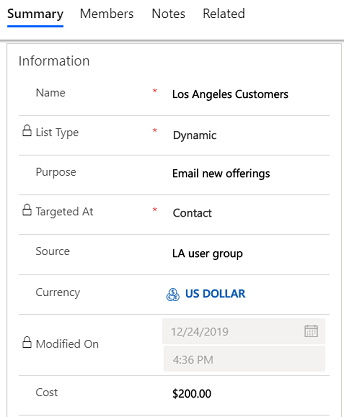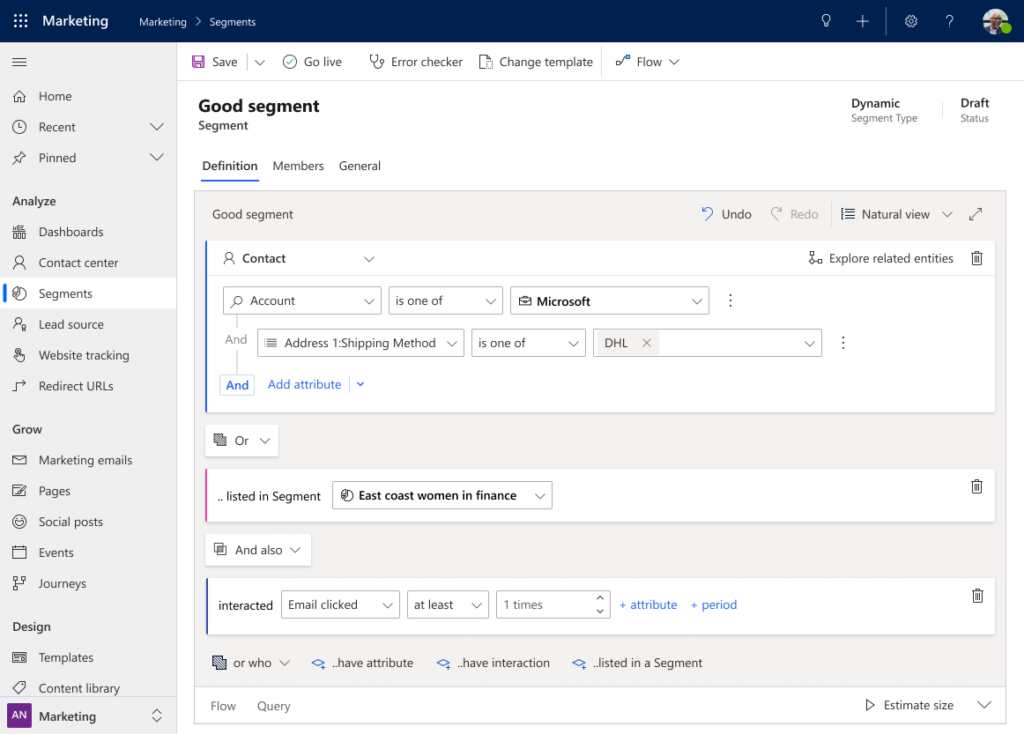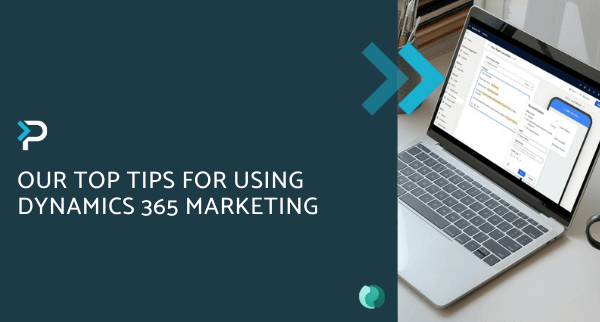What is the difference between Marketing Lists and Segments in Microsoft Dynamics 365?
What is the difference between Marketing Lists and Segments in Microsoft Dynamics 365?
April 14th, 2024
5 min read
It can be tricky to understand when to use marketing lists and when to use marketing segments. However, correct use of these features can result in better customer engagement, efficiency and productivity. In this blog, we will give an overview of both features, a comparison of the two and when best to use one or the other.
What is a Marketing List?
A marketing list is a simple list created within any of the Dynamics 365 Applications, that includes any single type of customer record (lead, account or contact). Marketing lists are also active upon creation and are not integrated with the marketing-insights services, unlike Marketing Segments.
Two types of lists can be created, which are:
- Static – A static list is one in which you select and manually add members to the list. Once the list is created, it doesn’t change over time unless you add or subtract members.
- Dynamic – Dynamic marketing lists update automatically, based on search criteria you set, and updates each time it is opened. Users have the ability to create a quick campaign from the list or distribute a campaign activity, for a campaign associated with the list.
Example use for a marketing list:
These lists are best used to send quick communications; for example, a monthly newsletter can be sent using a marketing list.

What are Marketing Segments?
Marketing segments let you create groups of related contacts that you can target with customer journeys (nurture marketing emails, marketing forms & pages, events, and more), and can only be created in Dynamics 365 Customer Insights – Journeys.
Unlike Marketing Lists that are active upon creation, segments must be activated to go live.
Each segment is a collection of related contacts which can be used individually or combined with other segments.
Why use segments?
Marketing segments enable you to design a better customer journey, as they run on the marketing-insights service; a service that provides businesses with important data on how customers are interacting with your digital marketing. You can easily group related contacts to perform more targeted marketing, as well as cross-referencing your leads in Dynamics 365 Marketing, existing marketing lists, survey data, to find the right contacts you can engage with.
Example of how to use marketing segments?
For example, if you’re an online business who is running a sale on shoes, you will most likely want to target contacts who have shown interest in the shoes in the past. To achieve this, you can narrow down your segment by only targeting contacts who have opened your previous emails related to shoes.
These types of decisions will affect how you communicate with the segment, what channels, language to use, etc. Overall, you are able to personalise your communications better and increase engagement, this is also made easier by Copilot in Dynamics 365 Customer Insights which can help you create and build lists and segments using spoken language AI.
Marketing segments can either be Dynamic or Static:
- Static – Static segments enable you to choose and add segment members manually (one by one) based on existing lists or search results. You can also add segment members with a query (selecting multiple contacts once).
- Dynamic – Segments are created by setting logical expressions such as ‘all contacts within London’ or ‘all new contacts within the last two weeks’. The number of contacts within a segment change adjusting automatically to any data changes within the CRM system.

Quick Summary of Marketing Lists vs Marketing Segments
Marketing Lists
- Can be created within any of the Dynamics 365 applications
- Use with contacts, leads, or accounts
- Best for quick communications
- Not integrated with marketing-insights services
- Active upon creation
- Contacts can unsubscribe themselves from a marketing list (every email sent from a marketing list must have the unsubscribe button)
Marketing Segments
- Only available in Microsoft Dynamics 365 Customer Insights – Journeys
- Use in Customer Journeys and campaigns
- Runs on marketing-insights services
- Use with contacts only
- Must go live to activate
- Contacts can unsubscribe from all emails, which includes those sent using a segment
Hopefully, the summary has given you an insight into the difference between Marketing Lists vs Segments, and how these might be used in your business. To explore more about the D365 Marketing why not check out our blog on the benefits of Dynamics 365 Marketing for your business.
For more information on how to create these lists within Microsoft Dynamics 365 look here:
Marketing Segments: https://docs.microsoft.com/en-us/dynamics365/marketing/segmentation-lists-subscriptions
Marketing Lists: https://docs.microsoft.com/en-us/dynamics365/sales/create-marketing-list-using-app-marketing-sales
Contact Us
If you have any questions about Marketing Lists or Segments, please get in touch by emailing us at info@pragmatiq.co.uk, or call us on 01908 038110. Alternatively, fill out our contact form or subscribe to our newsletter.
Want to keep in touch?
Sign up to our newsletter for regular updates.
"*" indicates required fields


